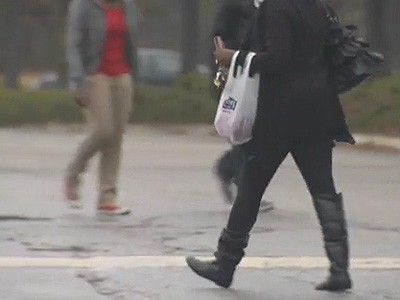Santa isn’t the only one stowing bags of loot this season, according to some recent reports on retail fraud.
If you’re looking for a contrarian Christmas story, this might be one to pursue. Whether you approach it as a reflection of the economy, or as a behind-the-scenes retail operations feature, or even a technology story about anti-theft devices, the case of the disappearing merchandise is a viable topic during store-heavy holiday business coverage.
“Pregnancy tests are also among
the items most commonly
targeted by thieves — particularly
organized-crime networks.”
– National Retail Federation
In fact, J.C. Penney executives just reported that third-quarter shoplifting damaged the company’s profit to the tune of 1.1 percent of gross margins, with losses to thieves climbing by $300,000 chain-wide. Merchandise unprotected during the switch to a new security system is blamed, in part, for the problem. I have to wonder if shrinkage from employee theft also is worse at struggling retailers; maybe workers who feel they are on a sinking ship feel more worried about their jobs and financial future and/or justified in plundering while they can. That might be something to ask risk-management experts and the retailers themselves.
The Akron Beacon Journal reports that “Retailers prepare for shoplifting season,” and among other sources cites the Center for Retail Research in the U.K., which last year said consumer shoplifting, employee theft and ‘supply chain fraud’ would cost U.S. stores nearly $9 billion – or $98.49 per household — last year. Nearly $4 billion of the losses were attributable to shoplifting, the research firm said.
This report suggests that if you’re looking to do a behind-the-scenes piece, don’t forget about the path goods take before they hit the stores. Companies like Checkpoint, which sponsors the annual Global Retail Theft Barometer, develop systems like the plastic tags that are attached to high-end apparel in stores, and tags that protect pricey items at drugstores, like $50 dental whitening systems. The just-out theft barometer says shrinkage equals 1.4 percent of sales annually, worldwide. Electronics, fashion apparel and expensive sundries like baby formula are most at risk, the report says.
This jives with this recent slideshow from MarketWatch, “The 8 products shoplifters love to steal.” And you might check around with other retail or service specialty operators; this report from QSR, a restaurant trade publication, outlines a couple of employee theft schemes.
In addition to impulse or “amateur” shoplifting, the problem of employee and supply chain theft is a big one for merchants. The National Retail Federation in June released its annual Organized Retail Crime Survey — it found that more than 93 percent of retailers said they’d experienced theft in the preceding year, and that they believe the incidence is increasing. Fraud related to merchandise returns, gift cards and other crimes are mentioned in the report; the PDF of the complete survey may be downloaded here; it includes Top 10 cities for shoplifting and commonly stolen items. High-end vacuum cleaners are on that list; one wonders how thieves make off with those.
Talk with law enforcement about arrests, with retailers about risk management strategies, and investigate the availability of crime reports for your area’s regional malls — it might be interesting to overlay a mall map or directory with icons for various types of retail fraud. (Do retailers report these things to local law enforcement or is the information kept private between mall operators and store chains? This industry is particularly sensitive to bad press so secrecy might be the common practice; even so that’s an interesting theme you can follow up on.)
Again, it might be interesting to explore the nexus between the economy and shoplifting. Has income inequality, the expiration of unemployment benefits extensions and recent cuts to food stamp benefits driven more people (including a store’s own employees) to steal food and goods? What are grocery stores experiencing, compared to previous years? What products go missing the most often? Public/indigent criminal defenders and others who provide legal assistance to the poor might be able to connect you with individuals for a case study or two, if you pursue the economic angle.
The National Association for Shoplifting Prevention offers stats and factoids. And for shoplifting with a psychological basis, groups like Shoplifters Anonymous might offer insight.











